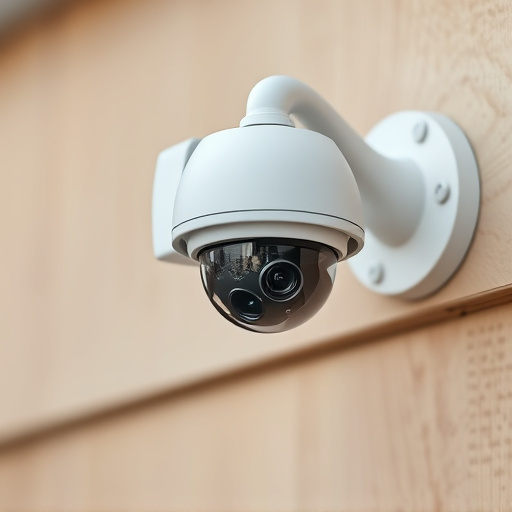The Dummy Surveillance Deterrent Positioning Guide promotes cost-effective security by strategically placing realistic fake cameras to deter crime. These mimic real surveillance equipment, enhancing visibility at entry points and high-value areas while maintaining privacy. A diverse market offers various dummy cameras, signs, and kits with motion sensors for comprehensive protection without the expense of real systems. Ethical use includes limited recording and clear signage, ensuring these devices bolster security while respecting individual privacy rights.
“Uncover the world of realistic fake surveillance equipment—a growing trend in security deterrents. This comprehensive guide, ‘Dummy Surveillance Deterrent Positioning Guide,’ delves into the intricacies of understanding and employing these innovative devices. We explore various types available in the market, offering a detailed overview for optimal positioning strategies.
From legal considerations to ethical debates, this article navigates the landscape, providing insights for those seeking an effective yet subtle security solution. Discover how fake surveillance can deter potential threats while ensuring peace of mind.”
- Understanding Dummy Surveillance Equipment: A Comprehensive Overview
- Types of Fake Surveillance Deterrents: What's Available on the Market?
- Effective Positioning Strategies for Optimal Deterrent Impact
- Legal and Ethical Considerations: Navigating the Landscape of Fake Surveillance
Understanding Dummy Surveillance Equipment: A Comprehensive Overview
Dummy surveillance equipment, often referred to as fake cameras or decoys, is a strategic tool for enhancing security while maintaining a realistic appearance. These devices are designed to mimic authentic surveillance systems, serving as a powerful deterrent against potential intruders or malicious activities. By strategically positioning them, organizations and individuals can create the perception of enhanced security, thereby reducing the likelihood of criminal behavior.
A Dummy Surveillance Deterrent Positioning Guide is essential for maximizing their effectiveness. Key considerations include placement in prominent, easily visible areas, ensuring they blend seamlessly with real cameras and other hardware. Common locations include entry points, parking lots, and high-value asset areas. Additionally, regular maintenance and realistic lighting can further bolster their realism, making them a valuable asset in any comprehensive security strategy.
Types of Fake Surveillance Deterrents: What's Available on the Market?
The market for dummy surveillance deterrents has evolved significantly, offering a range of options to suit various needs and preferences. These devices are designed to mimic real security cameras, signs, and equipment, providing an effective way to deter potential intruders or vandals from targeting sensitive areas. One popular type is the dummy camera, which comes in various forms, including fixed, pan-tilt-zoom (PTZ), and even wireless models. These fake cameras are crafted with intricate detail, featuring realistic lenses and housing, often made from high-quality materials like plastic or metal to withstand outdoor conditions.
Another common deterrent is the fake surveillance sign, which can be strategically placed in areas where real security equipment might be expected. These signs come in different designs, from simple stick-on decals to more elaborate metal or plastic structures. They convey a clear message that the location is under surveillance, potentially discouraging unwanted activities. For those seeking a more comprehensive approach, combined dummy camera and sign kits are available, offering both visual and auditory deterrents with added features like motion sensors or flashing lights to startle potential intruders. These products provide a cost-effective solution for property owners, businesses, and facilities managers looking to enhance security without the expense of installing actual surveillance equipment.
Effective Positioning Strategies for Optimal Deterrent Impact
Realistic-looking fake surveillance equipment, often referred to as dummy cameras or decoys, is a powerful tool for deterring potential criminals. However, their effectiveness largely depends on strategic positioning. A Dummy Surveillance Deterrent Positioning Guide can offer valuable insights into optimizing these security measures.
For maximum impact, dummy cameras should be placed in obvious yet non-obtrusive locations. High-traffic areas like entry points, windows, and open spaces are ideal, as they serve as visual reminders of surveillance without appearing too overt. Mounting them at eye level or slightly elevated positions mimics real camera angles, enhancing their realism and deterrence value. Additionally, rotating or moving these decoys periodically can further increase their effectiveness, mimicking genuine surveillance practices and keeping would-be perpetrators on their toes.
Legal and Ethical Considerations: Navigating the Landscape of Fake Surveillance
The rise of realistic-looking dummy surveillance equipment has sparked a complex debate, balancing security needs with privacy concerns. As more advanced fakes enter the market, it becomes crucial to understand the legal and ethical implications of their use. Dummy cameras and other deterrents, when positioned strategically, can act as powerful visual reminders, dissuading potential criminals from targeting private properties or public spaces. However, their placement must adhere to strict guidelines to avoid infringing on civil liberties.
Ethical considerations demand that the use of fake surveillance be limited to visible deterrence, with minimal actual recording capabilities. Proper positioning guides should ensure these devices are not used as covert listening posts or for unauthorized data collection. Moreover, transparency about the presence of dummy equipment is key; clear signage can help inform individuals that they are being monitored, protecting against potential privacy abuses and fostering public trust.
Realistic fake surveillance equipment, or dummy deterrents, offer a strategic way to enhance security while navigating legal and ethical boundaries. This comprehensive guide has explored various types of dummy cameras and their positioning strategies, ensuring optimal impact as a deterrent. By understanding the market options and implementing effective placement techniques, individuals and organizations can create an impression of enhanced surveillance, thereby deterring potential threats. Remember, responsible use and compliance with local laws are key when utilizing these innovative security solutions.
